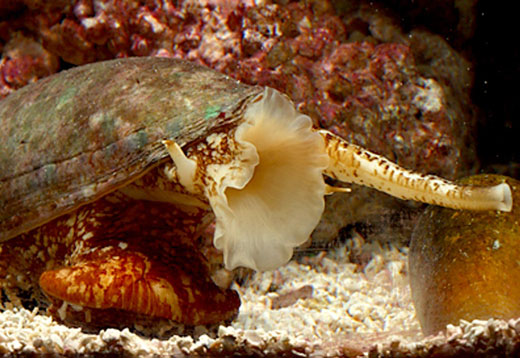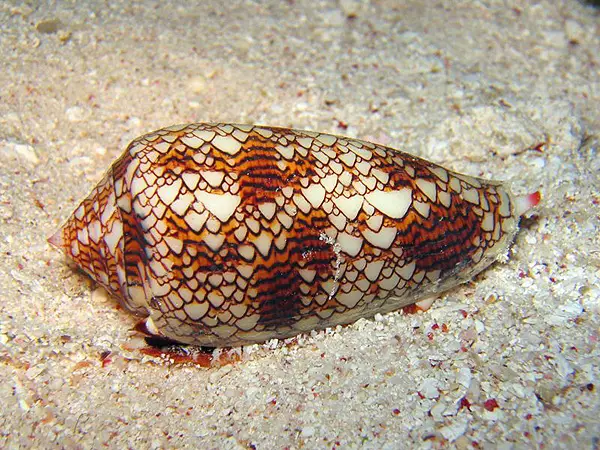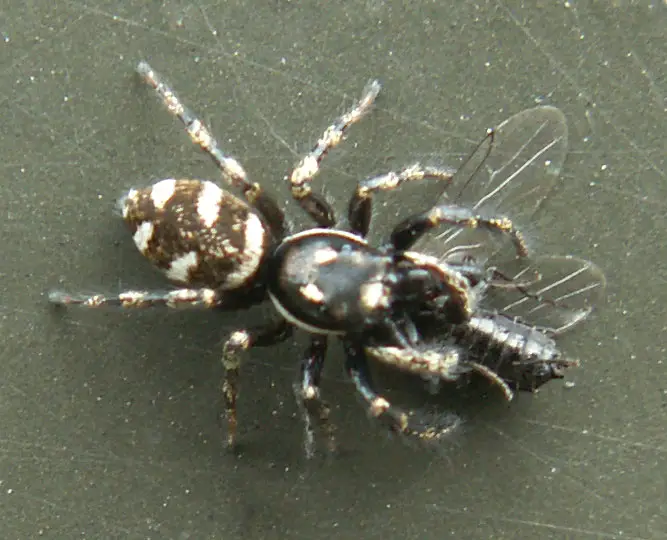Cone Snail
Cone snails are also known as cone shells or cones in shorter version. It is from the family Conidae. They are a taxonomic family which varies in size from medium to large. It is a family of marine gastropod mollusks and predatory sea snails. The shapes of the shells of cone snails are similar to those of ice cream cones.
The narrow end of the shell displays the anterior end, while the wide end displays the usually very low spire of the gastropod shell. With the use of harpoon, these snails make their way through hunting and immobilizing prey. The harpoon is a modified radular tooth accompanied with a poison gland containing neurotoxins.

The Cone Snail
As a source of emerging, medically significant substances, cone venom plays an important part and makes huge promises. As live cone shells possess the capability of stinging humans with obnoxious outcomes, they should not be controlled or handled. It can be really dangerous for the humans, especially the sting of a few of the larger species of tropical cone snails. The shells of these cone snails mostly glitter in their own way as they are brightly colored and intricately patterned.
Life habits
These snails are mostly carnivorous i.e. they consume marine worms, mollusks, small fish and even other cone snails in most of the generic conditions. They possess a venomous harpoon as they tend to move. It is made use to capture faster-moving prey like those of the fish. Some of the venom of a few larger species is dangerous enough to kill a human being. Such is the power of venom of a few of the lager species.

The Cone Snail
Pertinence to Humans
Some humans find the snails attractive because of the glittering colors and patterns. So, people tend to hold it in the hand which can be dangerous sometimes as the snail can fire its harpoon anytime in its self defense. The sting of some smaller species is akin to that of a bee or a hornet. But, controlling or handling some of the larger species can be like playing with fire as it can have deadly effects or results. Due to the cone snail envenomation, 30 human deaths have been recorded.
There exists a species known as geography cone which can also be called colloquially as the cigarette snail. It is named such in the belief that the sufferer or the victim will only get the time of having a puff or smoking a cigarette before he gives up the ghost or expires.
The harpoon can break in gloves and even wetsuits, especially in the case of these larger species of cone snails. Some of the signs that one has encountered cone snail sting comprise of extreme pain, numbness, swelling and tingling. Signs cans et off in a flash or can be delayed in onset for days on end. Most intense cases comprise of muscle paralysis, change in vision, respiratory breakdown that can make its way to death. Until the venom is metabolized by the victim, treatment includes life support only. Also, there is no ant venom.


THIS ARTICLE HAS A SIMPLE AND LUCID STYLE. AS I AM INTERESTED IN MARINE BIOLOGY THIS INFORMATION HELPED ME A LOT IN THE UNDERSTANDING ABOUT CONE SNAILS AND ITS POTENTIALS.. THANKING YOU
your really helpful :)
cone snails are such majestic creatures.
I love Cone Snails. Good website!
Cone Snails Are Beatiful but deadly.It comes out and stings you and paralizes you if it stings you..however, if it stings you, you can’t tell people about what happened.
Why can’t you tell people what happened..?
Scary little creature you’ve warned us about. I’m here to tell you the other side of the story. Since Jan. 2000, I’ve had a much better life because of this tiny demon. The venom has been used to block specific pain and help treat cancer patients, back problems and in my case, nerve damage. I’ve had much better results in the last 10 years from the “prialt (zicontide),” than I ever did while on morphine. I would hope that an update be added to this otherwise informative article.
This is a very good article. Not the best written article on cone snails, but still very good. I hope to see one or more of these cone snails in action. Also, does anyone know anything about the Sundial Shells? I’ve read that one of the families of these beautiful and spiral-shaped shells is in a family known as Noble Architecture. Let me know if this is correct.
i love bugs, animals and nature so thats why i came on to this website. that cone snail is sick!!!!!! i love the pics!!!
helpful website.